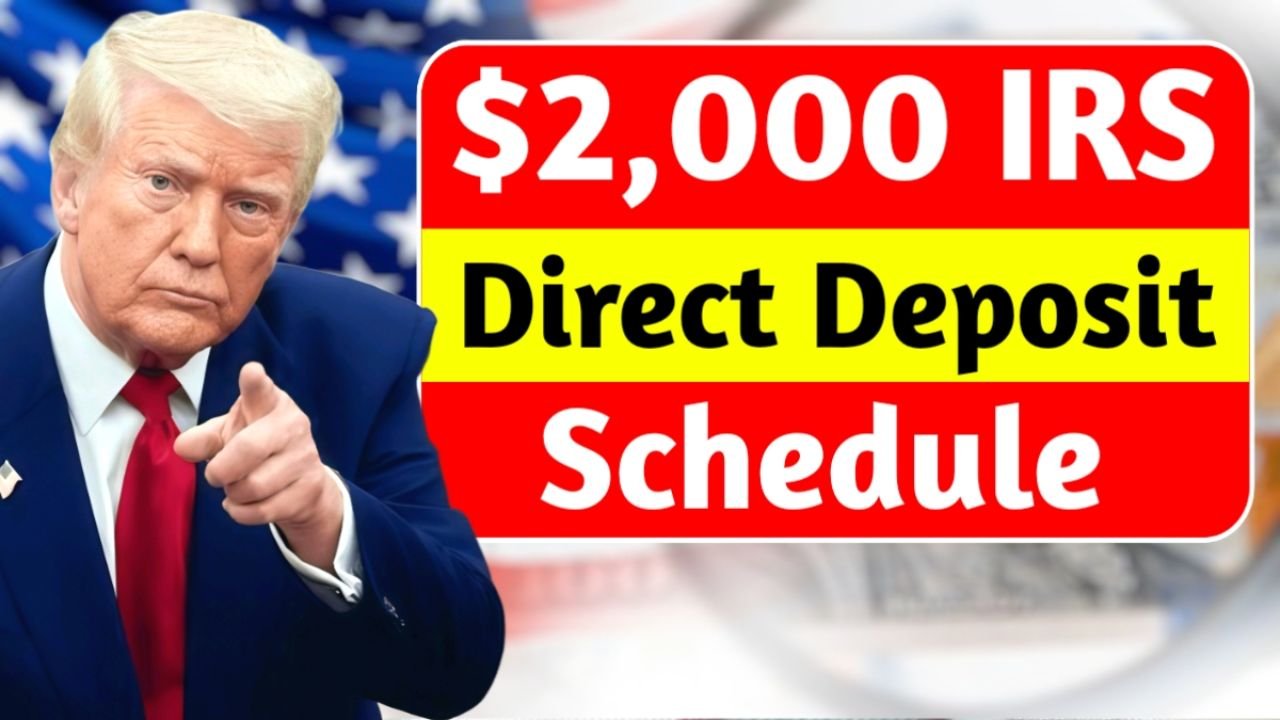Millions of Americans are preparing for a $2,000 IRS direct deposit this November 2025. This one-time federal relief payment aims to help citizens cope with rising living costs, including rent, groceries, healthcare, and utilities. Managed by the IRS in collaboration with the U.S. Treasury, the initiative targets households facing financial pressure due to inflation and economic uncertainty.
With the rollout scheduled for early to late November, understanding eligibility, payment methods, and how to track your deposit is essential to ensure a smooth and timely delivery.
What Is the $2,000 IRS Direct Deposit?
The $2,000 IRS direct deposit is a one-time relief payment designed to support Americans amid high inflation. Unlike previous pandemic-related stimulus checks, this payment focuses on current economic challenges, providing immediate financial relief for households struggling to cover essential expenses.
Key purposes of the payment include:
- Offering short-term financial stability for low- to middle-income households.
- Preventing debt accumulation during the holiday season.
- Supporting essential living costs such as rent, utilities, and groceries.
- Ensuring a secure and transparent distribution through IRS systems.
Eligibility Criteria
To qualify for the $2,000 IRS direct deposit, individuals must meet the following requirements:
- Citizenship/Residency: U.S. citizens or lawful permanent residents with a valid Social Security Number (SSN) or Individual Taxpayer Identification Number (ITIN).
- Income Limits:
- Single filers: up to $75,000 annually
- Heads of household: up to $112,500
- Married couples (joint): up to $150,000
- Phase-Out: Payments gradually reduce for incomes above the thresholds.
- Federal Benefits: Recipients of SSI, SSDI, VA, or RRB programs are automatically included.
- Tax Filing: Must have filed 2023 or 2024 federal tax returns to verify income and payment method.
Updating banking and mailing information on the IRS portal ensures timely delivery.
Payment Schedule and Distribution
The IRS will distribute payments using multiple methods to accommodate all recipients:
- Direct Deposit: Begins November 8 and continues through November 27, 2025.
- Federal Benefit Accounts: Social Security and VA recipients can expect deposits between November 12 and November 22.
- Paper Checks: Mailed from November 20 onward, with delivery depending on postal service schedules.
Tips for smooth payment:
- Confirm direct deposit details via the IRS online account.
- Keep tax filings and banking information current.
- Watch for transaction labels referencing IRS deposits to confirm authenticity.
How to Track Your Payment
The IRS’s “Get My Payment” portal allows taxpayers to:
- Confirm payment status in real-time.
- Check the method of payment (direct deposit or mailed check).
- View expected deposit or delivery dates.
To access the portal, you need your SSN, date of birth, and registered mailing address. Only rely on official IRS channels to avoid scams or phishing attempts.
Why This Payment Matters
This $2,000 direct deposit provides:
- Immediate financial relief for households struggling with inflation.
- Support for retirees and low-income families covering essential expenses.
- An economic boost as recipients spend on local goods and services.
- Peace of mind for millions ahead of the year-end holiday season.
Economists note that timely federal payments like this help stabilize local economies while easing household financial pressure.
FAQs
Q1: Who is eligible for the $2,000 IRS payment?
A1: U.S. citizens and lawful residents meeting income thresholds and filing 2023 or 2024 tax returns.
Q2: How will I receive the payment?
A2: Through direct deposit, federal benefit accounts, or mailed paper checks.
Q3: Do SSI or VA recipients need to apply?
A3: No, they are automatically included if other criteria are met.
Q4: When will the payments be deposited?
A4: Direct deposits start November 8; paper checks begin mailing November 20.
Q5: How can I avoid scams?
A5: Only trust IRS portals and official announcements. Never share personal banking info through email or phone.
Conclusion
The $2,000 IRS direct deposit for November 2025 offers crucial support amid inflationary pressures, helping families, retirees, and low-income earners manage essential expenses. By keeping tax filings and banking details updated, recipients can receive payments quickly and securely. Monitoring the official IRS portals ensures safety from scams and provides real-time updates, making the process seamless and reliable.





